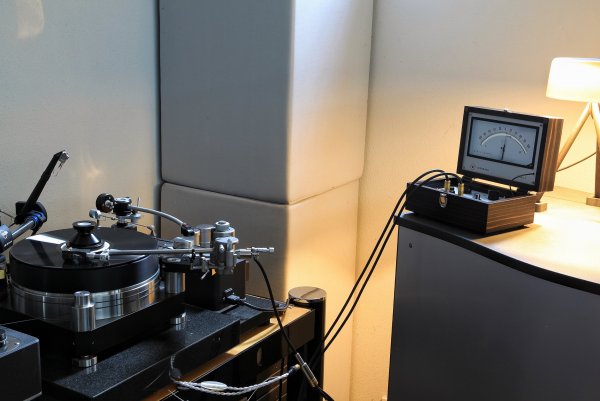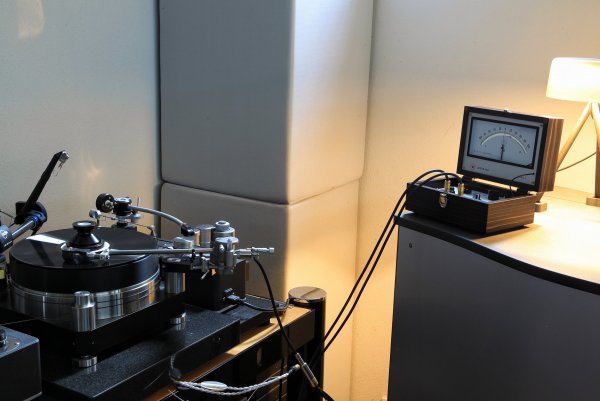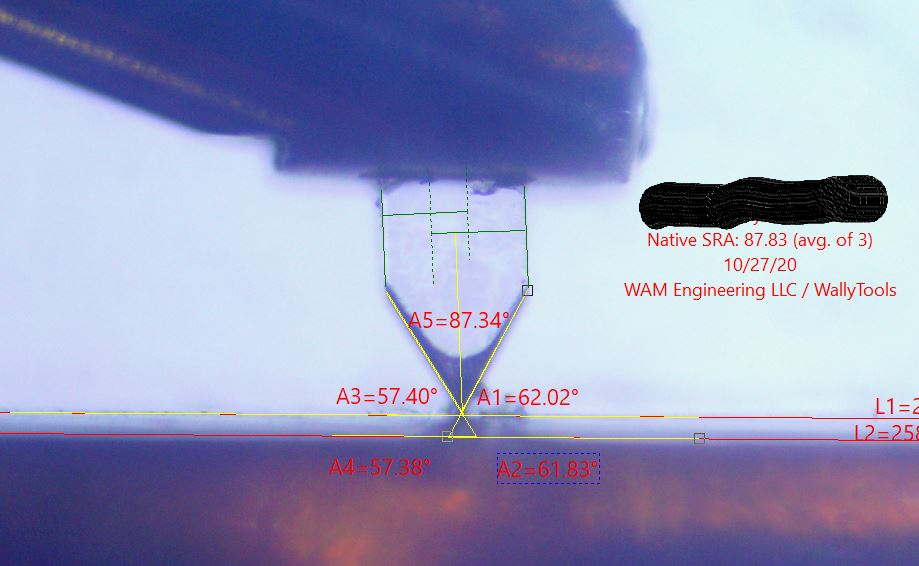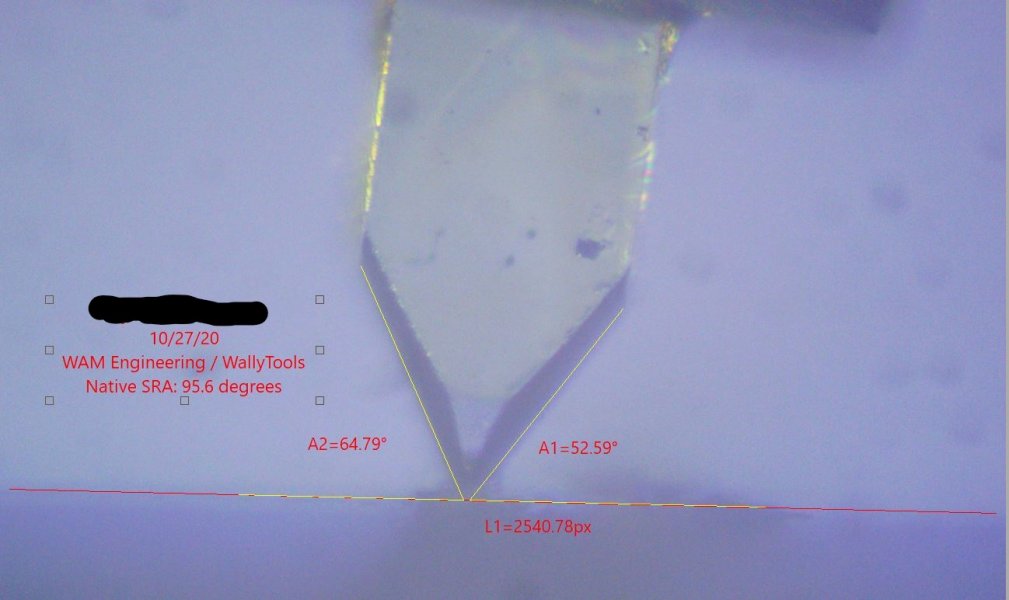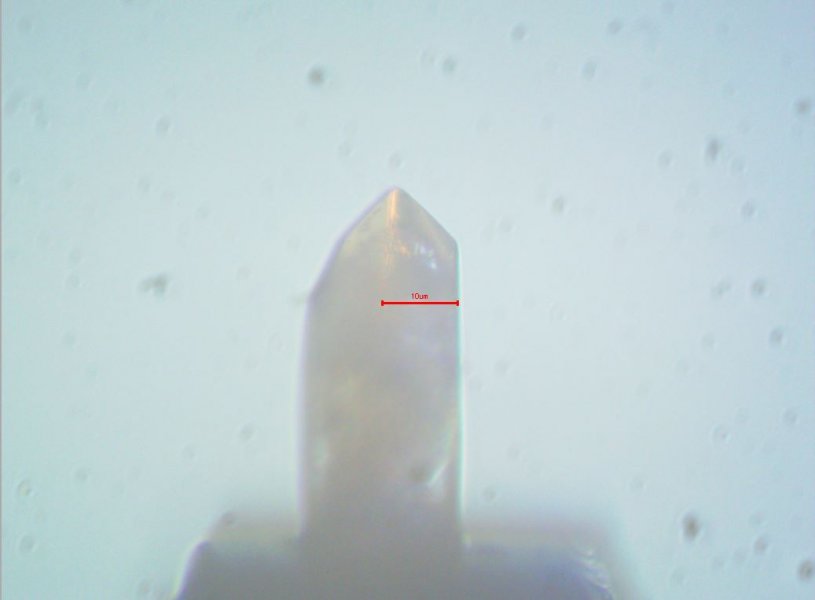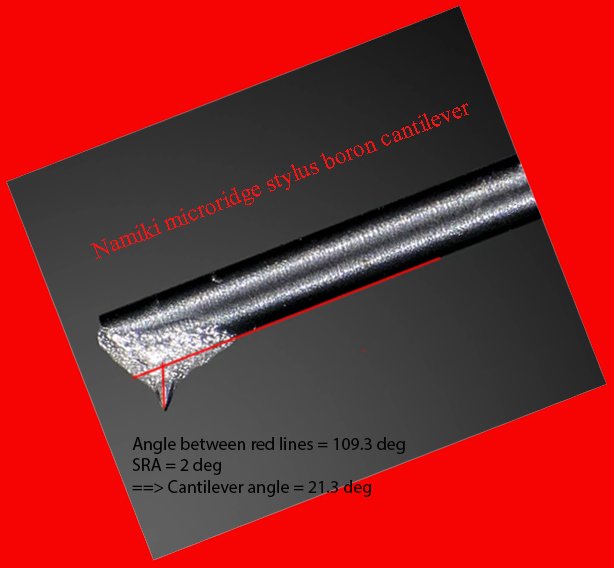SRA is in a sad state of affairs in the industry right now. Out of the last four cartridge measurements I've done, only ONE is within an acceptable +-2 degrees of error (actually, it was out of that spec by 0.16 degrees, but who's counting when they have all been such crap?!). The others at native SRA of 87.75 degrees, 88.6 degrees and 96 degrees. Those cartridges run the range from $2,000 up to $9,000.
Unfortunately, this is quite common and most people don't even know they are living with it.
When the error is that bad, there is no amount of tonearm height adjustment you can make to offer a perfect 92.25-92.65 degree static SRA (depending upon cartridge compliance) - especially on a 12" arm. You either need to send it back to the manufacturer for repair/replacement or have a custom designed wedge to place between the cartridge and headshell.
Dialing SRA in by ear on a cartridge like this would be an exercise in futility not only because you would not think it wise to play your arm at a very obvious angle but also because changes to SRA also impact azimuth in a big way - so what are you really listening to when you change the tonearm height? Of course, changing VTF also changes SRA. For your interest: Wally calculated that on the Kuzma 4Point mounted with a 35 um/mN compliant cartridge (very compliant) changes to tonearm height would result in NO changes to SRA due to the dynamic balancing of the tonearm.
FWIW: the one cartridge that was in the acceptable range belongs to a very famous audio reviewer. I wonder if the manufacturer gave HIS cartridge better QA since the same cartridge brand is also the one that comes in at 96 degrees and I have measured others of the same brand fairing quite poorly as well. Unacceptable for such a cost.
Some photos attached - including one bonus one showing uneven stylus wear on the right channel due to a flaw in the tonearm that had 10% anti-skating forces applied before the anti-skating mechanism was even applied. Notice that the apex of the shank is no longer on the centerline of the shank. The "real" anti-skating forces were off the scales of the WallySkater which has a practical limit of measurement somewhere around 18-20% of VTF. Again, this is the same turntable visited by two "setup experts" that weren't using the proper methods to assess each setup parameter without influence of other parameters. This is VERY important to get things right!
Listening for optimum alignment just won't do. When something CAN be measured for alignment purposes, it MUST be measured.
